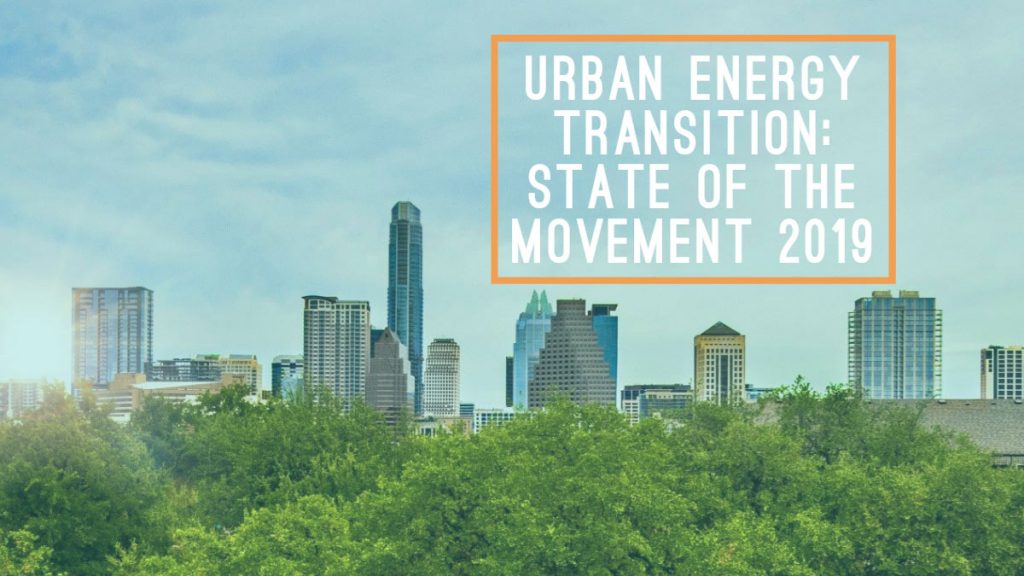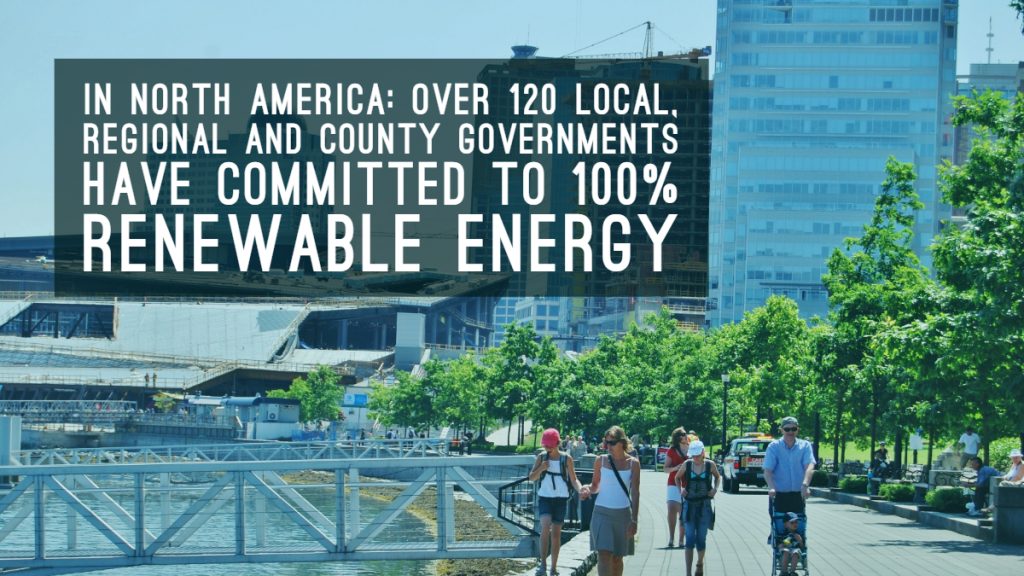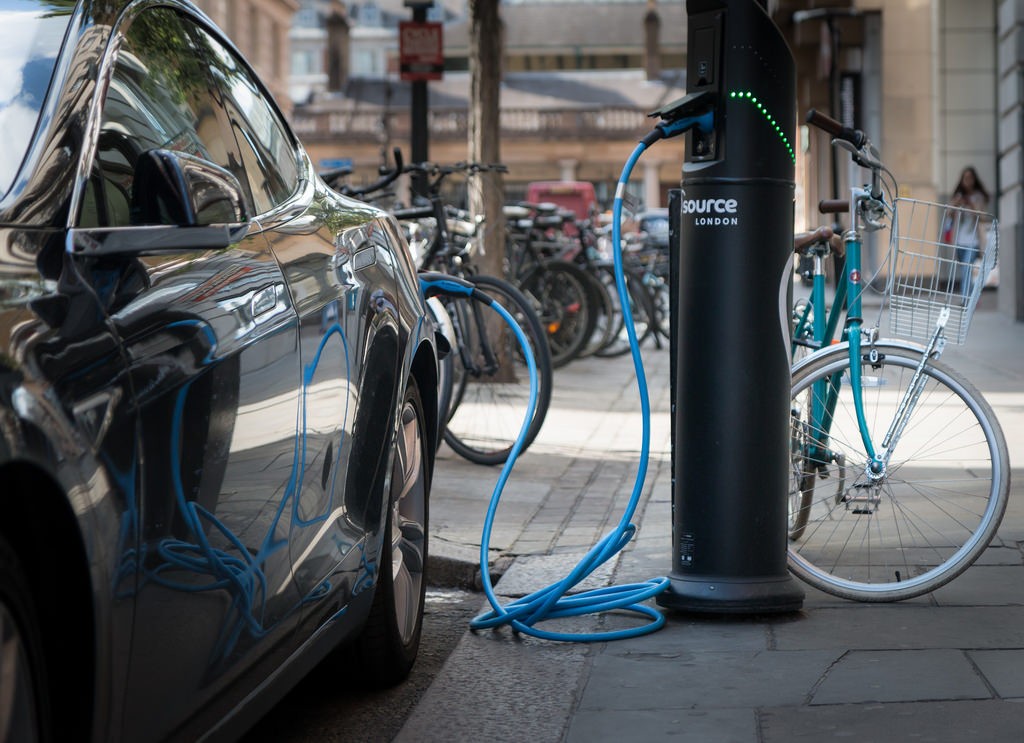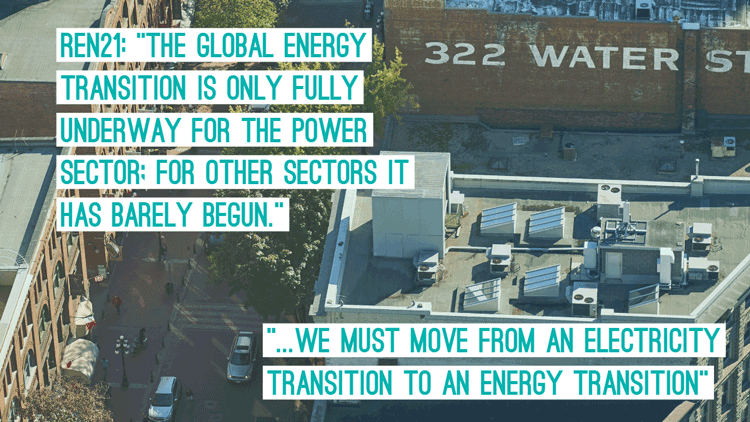
By: Keane Gruending, Communications Manager
The past year saw uneven progress towards the global and urban energy transition. The number of local and regional governments making 100% renewable energy (RE) commitments reached new heights, but global trends towards energy efficiency and renewables, despite some bright spots, need to accelerate.
Building on a state of the movement post written in January 2018, this article provides a high-level overview of recent international energy trends related to the urban sector.
Urban energy commitments
If 2017 was a strong year for the adoption of ambitious urban energy goals in North America then 2018 was herculean—predominantly in the United States.
One year ago, a total of 50 local governments in the U.S. and four in Canada had committed to 100% renewable energy in some depth and form. These commitments ranged from the aspirational to the legally-binding, and covered differing energy sectors—often just for electricity but sometimes more broadly in heating and cooling and transportation.
Fast forward to January 2019 and a new high water mark has been set.
In the U.S., now more than 100 local governments and 11 counties have adopted a 100% renewable energy target. Notable newcomers include and Minneapolis, Minn. and Washington D.C., of which the latter jurisdiction will see measures for existing buildings, the electrification of public fleets and even the White House switch over to renewable power.

Joining these local and regional governments are two U.S. states; California—the fifth largest economy of the world—and Hawaii. Notably, in 2018 California adopted a bill that will see the Golden State move to 100% renewable power by 2045.
In Canada, nearly one dozen local or regional governments have now taken strides towards 100% renewable energy in some fashion. In 2018, Edmonton, Alta. and Guelph, Ont. asked staff to plan to reach 100% renewable electricity for corporate operations, along with a range of other building and transportation measures. The Regional District of Central Kootenay in British Columbia and Saskatchewan’s capital of Regina similarly adopted motions to move to 100% RE.
Renewable transit
Renewable energy transit also took strides in 2018 throughout North America.
Thanks to rapidly decreasing battery costs, transit providers in Los Angeles, Montreal, Seattle and Vancouver have either adopted or moved forward on their goals to purchase only 100% renewable energy-powered or zero-emission fleets. In December, the state of California adopted its Innovative Clean Transit rule that will see all transit agencies in the state move to 100% zero-emission bus fleets by 2040.
GLOBAL STATUS
When a version of this post was first written one year ago in January 2018, it featured a snapshot of progress towards decarbonizing global energy systems in the electricity, heating and cooling and transportation sectors. While the intervening year saw a number of highs and lows in the shift to energy efficiency and renewables, globally, many of the trends remain the same today.
One year ago, the International Energy Agency (IEA) named renewable electricity (led by solar PV and onshore wind), electric vehicles and energy storage as champions of the day. Globlly, the IEA deemed that these technologies met or outpaced policy, investment and implementation expectations. Today, it is these same technologies (more or less) that are still providing the bright spots for energy transition advocates.
Renewable electricity revolution
On the shift to renewable electricity, the world has collectively taken leaps forward in improving energy efficiency and in enabling non-fossil fuel power generation.
According to the IEA’s 2018 World Energy Outlook, 18 of the agencies 30 country members have decreased total electricity use since 2010. For the latest year that data are available (2017), renewable electricity capacity grew by 8.3 per cent, continuing a decade-long trend of over eight per cent growth annually. When REN21 last published its 2018 Global Status Report, it reported that renewables accounted for 70% of global renewable electricity capacity additions in 2016. This incredible growth represents excellent progress in enabling the shift to renewables.
With the economics of power production changing so rapidly, it’s no wonder that over 50 local, subnational and national governments have now signed on to the Powering Past Coal Alliance; along with cheap natural gas, growth in renewable electricity is the reason that coal plant retirements in the U.S. have reached new plateaus.
Towards renewable power, the IPCC says, “There are signs that a systemic transition consistent with a 1.5°C pathway may be underway in the electricity generation sector.”
That’s the good news.
Beyond power: buildings and transportation
Despite this industrialized shift to renewable electricity, the overall pace of the global energy transition is piecemeal. REN21 says, “The global energy transition is only fully underway for the power sector; for other sectors it has barely begun… We must move from an electricity transition to an energy transition.”
With fossil fuels supplying over 70 per cent of the world’s heating needs and petroleum products accounting for 92 per cent of transportation energy, both sectors face significant obstacles in transitioning to renewables.
Buildings

According to the IPCC, in order to reach a pathway consistent with 1.5°C of warming, the global building stock will need to have 80 to 90 per cent fewer greenhouse gas emissions in 2050 than in 2010. This pathway would require all new buildings to be constructed to near zero-energy standard by 2020 and a five per cent annual rate of retrofits for buildings in developed countries. However, despite pockets of progress (for example, in B.C. all new buildings are to be net-zero energy ready by 2032), the International Renewable Energy Agency (IRENA) pegs the global retrofit rate at a paltry one per cent per year.
Transportation
The pace of electric vehicle (EV) sales is growing exponentially. With global cumulative EV sales hitting four million in early September 2018, the length of time required to sell one million electric vehicles has shrunk from sixty months to just six months. With such momentum, the IEA sees oil use for cars peaking in the mid-2020.

However, as a report by the Germany Ministry of Environment (UBA) on decarbonizing transportation in the G20 group of countries points out, “A focus on fuel standards and electrification is not enough.” The report calls for changing mobility patterns, more efficient transportation systems, and investments into public transit.
These measures are echoed by the IEA in its 20 Renewable Energy Policy Recommendations report, which in addition to increasing biofuels for transportation, calls on countries to, “…promote other transport options which can reduce transport demand (e.g. through better urban planning) and make transport use less energy-intensive, such as improved public transport, walking and cycling.”
Notably, a group of IPCC authors have cited that urban land cover is expanding at twice the rate of the urban population. They prescribe compact urban growth, and corresponding transportation mode share shifts, as keys to decarbonization, which the Global Commission on the Economy and Climate points out could be worth $17 trillion (USD) in economic savings by 2050.
A role for cities
Cities matter. In a landmark cooperative effort, IRENA, the IEA and REN21 published a 2050 roadmap for a global energy system transformation. This joint report points out that since urban environments account for the vast majority of the world’s energy demand and GHG emissions, “Cities and local governments are playing an increasingly important role in driving the energy transition.”
Notably, the C40 cities network reported in September 2018 that 27 of its member local governments had achieved both a peaking of and a 10 per cent reduction in GHG emissions. This is encouraging progress, especially when combined with the number of local and regional governments that are embracing ambitious energy transition targets. However, the overwhelming majority of these targets relate to electricity, and not to the heating and cooling and transportation sectors.
Renewable power generation is crucial, especially as heating and transportation are increasingly moving towards electricity; in fact, the IEA says that world power demand could nearly double by 2040 given these trends towards electrification. But significant progress will be required to increase energy efficiency in buildings and transportation, of which urban form is a major contributing factor, and renewables uptake.
Moving forward, serious attention needs to be paid to the implementation of urban energy targets, which will hopefully be increasingly more inclusive in terms of heating and cooling and transportation.
But this story is not just about local governments. Only two-thirds of country Nationally Determined Contributions (NDCs) submitted under the Paris Agreement address urban issues, effective 2016. To limit global warming to 1.5 ºC, effective collaborative governance frameworks, involving cooperation between local, subnational and national governments, will be required.
Ultimately, the tent for local governments pursuing ambitious energy targets is broad. Let’s hope 2019 continues to see a broadening of the tent, along with deeper action and more support from senior levels of government.
Renewable Cities reached out to some of its friends, a group of urban energy leaders, to get their thoughts on 2018 and prognosis for the future. What did they have to say? See our thought leaders outlook.


